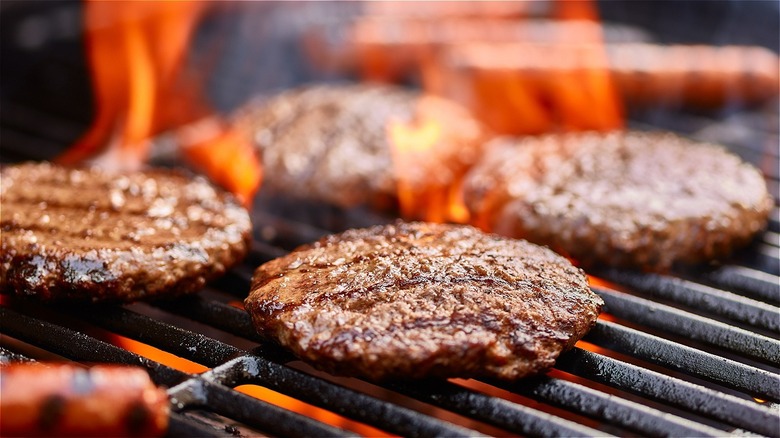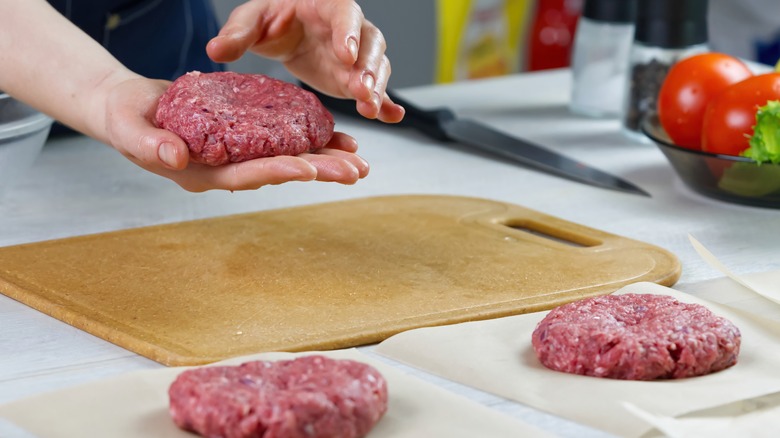The Mistake You're Making When Shaping Burgers For The Grill
We may receive a commission on purchases made from links.
Americans love burgers! On average, we consume 50 billion yearly, twice as many as our other favorite summer food, hot dogs. That's a whopping 140 million burgers a day, each of us doing our part by eating roughly 156 meat-sweat-inducing burgers a year. "All-beef patties, special sauce, lettuce, cheese, pickles, onions on a sesame seed bun" have become an integral part of our 'national cuisine' per USA Today.
According to Burger Web, 71% of all beef consumed in a restaurant is as a burger. The traditional hamburger of ground beef served between two burger buns is not the only way to enjoy this sandwich. As some Americans embrace a healthier diet, leaner burgers are made with unexpected ingredients like ground bison, turkey, chicken, and chopped fish like tuna, salmon, and shrimp. These tasty alternatives can be found on fast-casual restaurant menus nationwide (per Upserve.) Unlike meatballs or meatloaf, which contain binders like breadcrumbs, burgers should contain ground beef and seasonings like salt and pepper, and that's it. According to the USDA, hamburgers cannot contain "by-products or nonmeat extenders" (per Brittanica).
While the humble hamburger is a simple food to prepare, like any recipe, it begins with quality ingredients and proper technique. Whether your preferred cooking method is to pan-fry, steam, smash, broil, or grill your burgers, and whether you like it plain, topped with cheese, or piled high and dripping with sauce, shaping the burger is critical to your success.
Avoid this mistake when making hamburgers
Chefs agree a good hamburger starts with a fatty blend of ground beef for flavor and moisture. Chef Cory Harwell of Carson's Kitchen (via Eat This, Not That) recommends a mixture of "75% ground chuck, 15% ground brisket, and 10% ground short rib." While Hormel contributor and New York-based caterer Chef Vanessa Cantave told Mashed a lean meat-to-fat ratio of 80/20 of ground chuck creates a juicy burger and can be prepackaged in a supermarket.
According to Eat This, Not That, shaping your burgers is critical to cooking the meat evenly. Gather the beef into a large, even patty without compacting the meat. The tiny spaces left between the beef will fill with rendered fat as it cooks to create a juicier burger. Resist the urge to overwork the meat. That will bind the muscle fiber creating a tough bite, and the heat from your hands will melt the fat in the meat (per First We Feast).
Burgers will naturally shrink up to 30% while cooking. Using your bun as a guide, Harwell suggests making the patty an inch wider than the bun so once it's cooked, it fits perfectly. Keep the thickness of the patty uniform to ensure the burger will cook evenly. A patty maker ($15-$20 on Amazon) or placing the meat between two plates can help form an even patty. Finally, Harwell suggests making a dimple in the center of the burger to keep the hamburgers from puffing on the grill.

